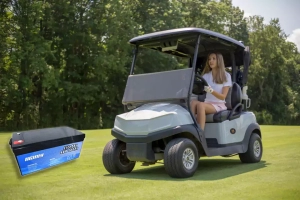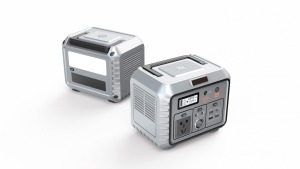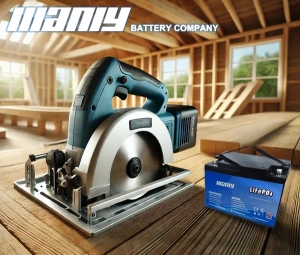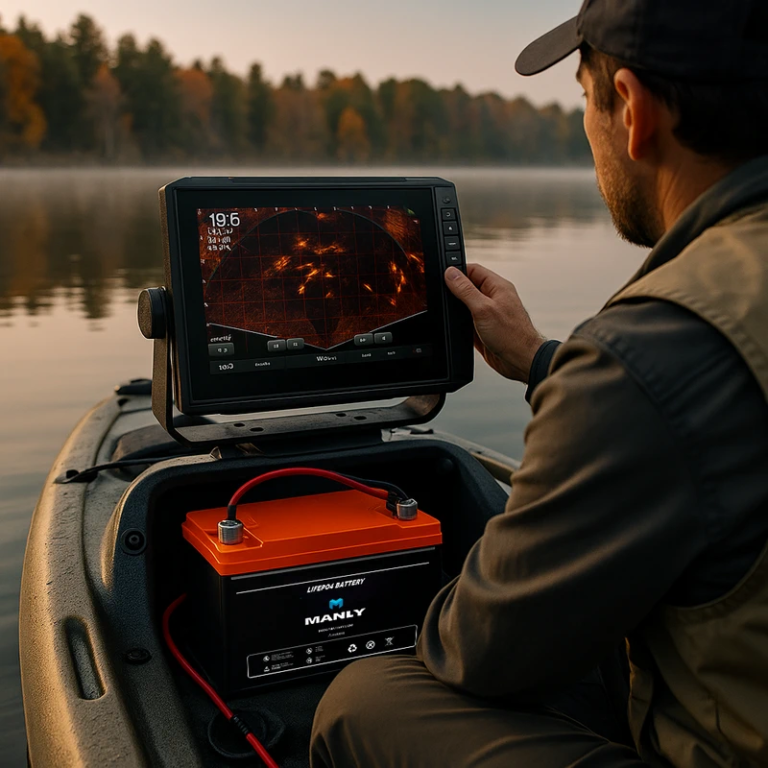Juegos Asiáticos HangZhou 2023: Revolución del perro robótico
Tabla de contenido
- Juegos Asiáticos HangZhou 2023: Revolución del perro robótico
- Los perros robóticos mejoran la eficiencia en los Juegos Asiáticos HangZhou 2023
- El futuro de los deportes: cómo los perros robóticos se roban el espectáculo en los Juegos Asiáticos de HangZhou
- Iones de litio frente a plomo ácido: ¿qué batería domina la tecnología moderna?
- Decodificación de baterías de iones de litio: clasificaciones clave
- Batería varonil
- Conclusión

Los perros robóticos mejoran la eficiencia en los Juegos Asiáticos HangZhou 2023
Robotic dogs, precision-manufactured and encapsulating numerous high-tech capabilities, have marked a distinctive presence in their operation. Initially, they employ a suite of sensor equipment, including LIDAR and cameras, to real-time collect data on their own location and that of the athletes, thus achieving autonomous navigation and positioning. Subsequently, equipped internally with advanced artificial intelligence modules, the robotic dogs can analyze athletes' postures, providing accurate feedback and support. Finally, they possess efficient battery and power systems, ensuring a stable working status throughout the competition.Moreover, these robotic dogs are quadruped robots, meaning they traverse on four legs rather than wheels. The advantage herein is that they can maintain stability on uneven ground and adapt to various terrains and obstacles. This marks the first global event to utilize quadruped robots; previously, many robots, such as those delivering water and towels to athletes at the 2018 PyeongChang Winter Olympics, were wheeled.Furthermore, these robotic dogs are fitted with fixtures on their backs to grip discuses, capable of bearing standard discuses of 1 to 2 kilograms, specially designed for the HangZhou Asian Games. Once a discus is thrown, a robotic dog races to staff located 50 meters away, who then affix the discus to the dog’s back, allowing it to return to the athlete. Consequently, athletes neither have to retrieve their discuses nor wait for staff to deliver them, saving time and energy. With a running speed of approximately 3.5 meters per second, a robotic dog can cover a distance of roughly 7200 meters during a competition, equivalent to 18 laps of a track field!This innovative point is not limited to the athletic field but also provides services in the badminton court. Intriguingly, videos have shown an athlete using a remote control to direct these robotic dogs in delivering bottled water.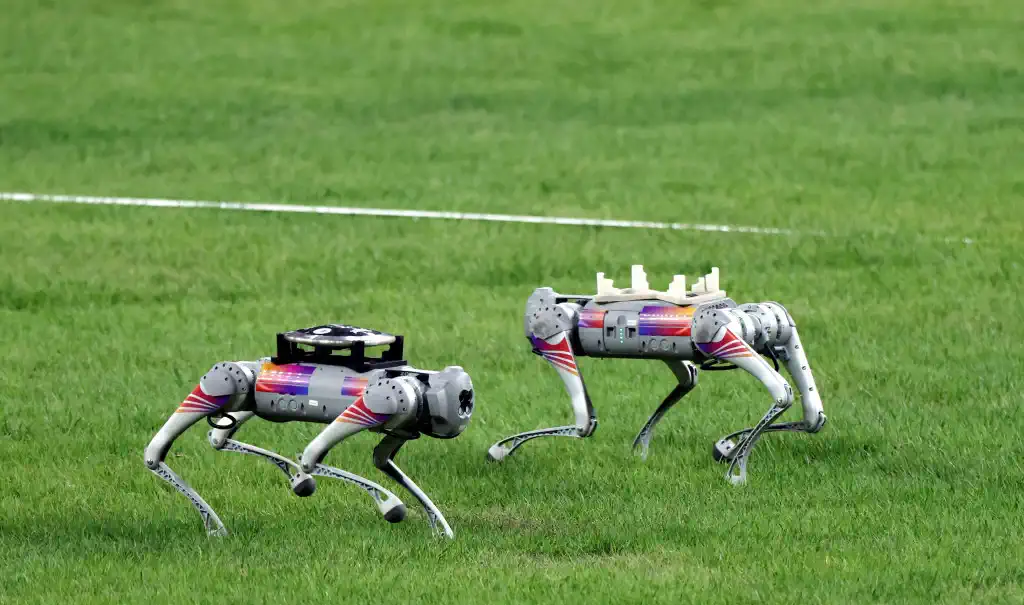
El futuro de los deportes: cómo los perros robóticos se roban el espectáculo en los Juegos Asiáticos de HangZhou
The HangZhou Asian Games’ pioneering use of robotic dogs to retrieve discuses can undoubtedly be described as groundbreaking. These robotic dogs not only heightened the efficiency but also added an element of entertainment to the games. Whenever they finish a task, they automatically "lie down" by the field, poised for the next instruction. Such innovation underscores the vast potential of technology in sporting events, bestowing the HangZhou Asian Games with a unique charm.Subsequently, the track and field events of the HangZhou Asian Games captivated the attention of media and audiences worldwide. The focus wasn’t solely because it's one of the critical competitions of the HangZhou Asian Games, but notably due to the emergence of this robotic dog, which became a spotlight on the field. Some netizens commented, "The HangZhou Asian Games are always up for surprises!" This novel method of transportation reflects the profound impact of technology on sports.Furthermore, the debut of the robotic dog undeniably added a splash of color to the HangZhou Asian Games. This is not just a showcase of technological prowess but also a glimpse into the future of sports. It is foreseeable that, in the days to come, robotic dogs will play an increasingly significant and broader role across various sectors. Whether in sports or daily life, robotic dogs are set to become invaluable allies and reliable companions for humans.For the realm of sports, introducing robotic dogs propels the advancement of sports technology, enhancing athletes' competitive levels. Through intelligent sensing and analysis systems, these dogs can assist athletes in better understanding their movements and techniques, potentially resulting in improved competition outcomes. In daily life, robotic dogs can not only offer companionship but also deliver various conveniences, aiding individuals in adapting to the fast-paced modern societal rhythm.By examining the coverage and description of the HangZhou Asian Games’ robotic dogs, we can discern not just the role and advantages of these robotic dogs in competitions, but also the transformative influence of technology in sports. Robotic dogs serve as more than just platforms showcasing technological might; they are intelligent companions and aids in sports. The deployment of artificial intelligence and robotic technology equips these dogs with the ability for intelligent sensing and communication, making them potent allies in work and life.Lastly, as technology continues to evolve and progress, future robotic dogs are anticipated to boast even more functionalities and application scenarios, bringing added convenience and joy to human life. The fusion of humanity and technology promises a brighter future – a vision we collectively look forward to and strive towards.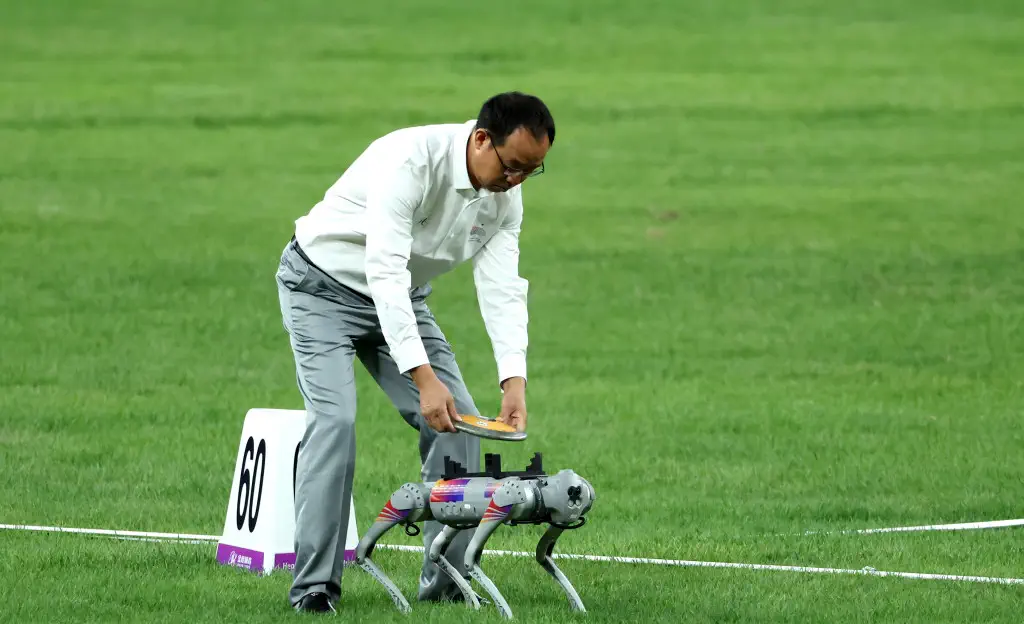
Iones de litio frente a plomo ácido: ¿qué batería domina la tecnología moderna?
In 2023, the HangZhou Asian Games emerged as a paradigm of the integration of technology and sports. Beyond the intense athletic competition, the HangZhou Asian Games also unveiled an eye-catching technological achievement – the use of robotic dogs. These robotic dogs played a unique role on the competition field, and notably, one standout feature was their reliance on advanced lithium battery technology for power.Instead of conventional internal combustion engines or cable power sources, the robotic dogs at the HangZhou Asian Games relied on lithium batteries. Lithium batteries are high-energy-density batteries, and due to their lightweight and efficient attributes, they're extensively used across various applications, ranging from smartphones to electric vehicles. This battery technology not only supplied ample power but also boasted exceptional durability, catering to the diverse needs on the HangZhou Asian Games' venues.In the past, robotic dogs typically relied on lead-acid batteries as their primary power source. While lead-acid batteries are stable, their limited capacity and heavier weight constrained the mobility and efficiency of the robotic dogs. However, with continuous technological breakthroughs, the adoption of lithium-ion batteries has brought about transformative changes for robotic dogs.Lithium-ion batteries are renowned for their high energy density, lightweight properties, and rechargeable features, enabling robotic dogs to excel on the Asian Games competition field. This battery technology offers extended battery life, faster charging speeds, and increased power output, allowing robotic dogs to operate efficiently throughout competitions.Now, as the shift from lead-acid, nickel-cadmium, or nickel-metal hydride batteries to lithium-ion ones is trending, what distinct characteristics do lithium-ion batteries possess?- Tienen una mayor relación energía-peso y energía-volumen.
- Su voltaje es elevado, con una sola celda de iones de litio de 3,6 V, aproximadamente equivalente a tres baterías de níquel-cadmio o níquel-hidruro metálico conectadas en serie.
- Presentan una autodescarga mínima, lo que permite un almacenamiento prolongado, lo que marca uno de sus rasgos más superiores.
Decodificación de baterías de iones de litio: clasificaciones clave
Typically, when we discuss power lithium batteries, the most commonly mentioned are lithium iron phosphate batteries, lithium manganese oxide batteries, lithium cobalt oxide batteries, and ternary lithium-ion batteries. So, what are the different classifications of lithium-ion batteries?En primer lugarSegún los materiales internos, las baterías de iones de litio generalmente se pueden dividir en dos categorías principales.- Baterías de metal de litio: Estas baterías suelen utilizar dióxido de manganeso como material del electrodo positivo y litio metálico o su aleación como material del electrodo negativo. También utilizan una solución electrolítica no acuosa.
- Baterías de iones de litio: These batteries often employ a lithium alloy metal oxide as the positive electrode material, graphite for the negative electrode, and a non-aqueous electrolyte. Although lithium metal batteries boast a high energy density - theoretically reaching 3860 watts/kg - their unstable nature and inability to be recharged prevent them from serving as reusable power lithium batteries. Por otro lado, las baterías de iones de litio, debido a sus capacidades recargables, se buscan enérgicamente como baterías de litio de gran potencia. Sin embargo, combinarlos con diferentes elementos da como resultado un rendimiento variado en los materiales de electrodos positivos, lo que genera intensos debates sobre el mejor camino a seguir dentro de la industria.
Batería varonil
Batería MANLY: el pináculo de la fabricación de baterías en China Established in China's vibrant core, MANLY Battery stands tall as the nation's foremost wholesale proveedor de baterías, con más de 13 años de experiencia distinguida. Nuestro legado, formado por un compromiso inquebrantable y una excelencia inigualable, solidifica nuestra posición en el ámbito de la producción de baterías.Una potencia de producción: Daily, our manufacturing lines produce an impressive 6MWh of battery cells and packs. Complementing this, we assemble upwards of 3,000 batteries daily – a testament to our dedication to volume without forsaking quality. Located over a massive 65,000 square meter expanse, our advanced manufacturing facilities anchor in China's top hubs: Shenzhen, Dongguan, and Huizhou.Diversas soluciones de baterías de MANLY:Mostramos una amplia colección de baterías LiFePO4/iones de litio, que varían de 6 V a 72 V, meticulosamente diseñadas para una gran variedad de aplicaciones:- Almacenamiento de energía solar
- Respaldo de energía residencial e industrial
- Robots de alta tecnología, incluido un perro robótico de grado militar
- Soporte para estaciones base
- Farolas solares ecológicas
- Unidades consistentes de suministro de energía ininterrumpida (UPS)
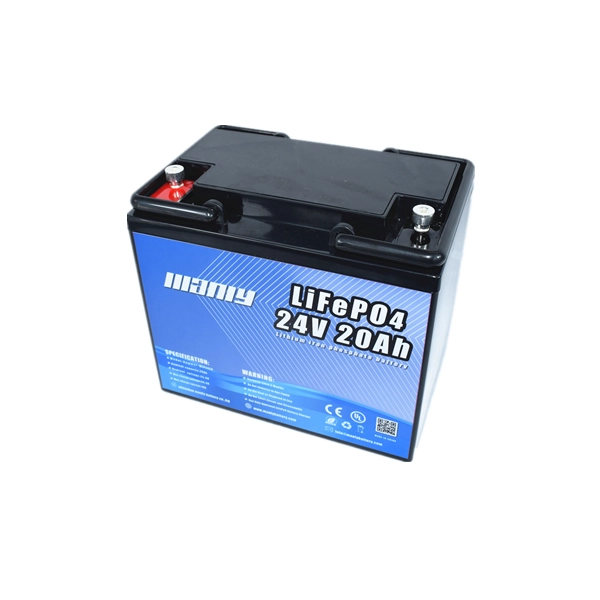 Personalización en su máxima expresión:Sus requisitos únicos son nuestro comando. Nuestra fabricación de baterías a medida ofrece una personalización incomparable, que abarca voltaje, tamaño, diseño y más, garantizando que cada unidad responda a las demandas del cliente.Productos aclamados internacionalmente:La confianza en MANLY está respaldada por certificaciones globales como UN38.3, IEC62133, UL y CE. Nuestros elogios reflejan nuestra dedicación a estándares superiores.Una década de confianza con garantía:La promesa de MANLY está respaldada por una sólida garantía de 10 años, que refleja nuestra confianza en la longevidad del producto.Seguridad y rendimiento combinados:Más allá del rendimiento de primer nivel, nuestras baterías enfatizan la seguridad del usuario, con características como protección contra cortocircuitos, barreras de sobrecarga y controles de corriente. Incluso después de impactos intensos, funcionan perfectamente y están equipados con adaptaciones de conexión versátiles.Fiabilidad incluso en los extremos:
MANLY's LiFePO4 batteries surpass other lithium variants, delivering consistently between -20°C to 75°C (-4°F to 167°F), making them ideal for tough conditions. Yet, for optimal longevity, we suggest adhering to our recommended temperature guidelines during charging.Elevada eficiencia energética:¿Por qué comprometerse? Experimente el pináculo de la eficiencia con nuestras baterías LiFePO4, que cuentan con una tasa de utilización de energía del 95 %. Superando a las baterías de plomo-ácido convencionales, que alcanzan un máximo de alrededor del 70 %, las nuestras garantizan una carga rápida y un desperdicio de energía mínimo.Interacciones mejoradas con la batería:La experiencia del usuario se redefine con nuestras baterías, complementadas con comodidades modernas como sincronización Bluetooth y un indicador intuitivo de nivel de energía.
Personalización en su máxima expresión:Sus requisitos únicos son nuestro comando. Nuestra fabricación de baterías a medida ofrece una personalización incomparable, que abarca voltaje, tamaño, diseño y más, garantizando que cada unidad responda a las demandas del cliente.Productos aclamados internacionalmente:La confianza en MANLY está respaldada por certificaciones globales como UN38.3, IEC62133, UL y CE. Nuestros elogios reflejan nuestra dedicación a estándares superiores.Una década de confianza con garantía:La promesa de MANLY está respaldada por una sólida garantía de 10 años, que refleja nuestra confianza en la longevidad del producto.Seguridad y rendimiento combinados:Más allá del rendimiento de primer nivel, nuestras baterías enfatizan la seguridad del usuario, con características como protección contra cortocircuitos, barreras de sobrecarga y controles de corriente. Incluso después de impactos intensos, funcionan perfectamente y están equipados con adaptaciones de conexión versátiles.Fiabilidad incluso en los extremos:
MANLY's LiFePO4 batteries surpass other lithium variants, delivering consistently between -20°C to 75°C (-4°F to 167°F), making them ideal for tough conditions. Yet, for optimal longevity, we suggest adhering to our recommended temperature guidelines during charging.Elevada eficiencia energética:¿Por qué comprometerse? Experimente el pináculo de la eficiencia con nuestras baterías LiFePO4, que cuentan con una tasa de utilización de energía del 95 %. Superando a las baterías de plomo-ácido convencionales, que alcanzan un máximo de alrededor del 70 %, las nuestras garantizan una carga rápida y un desperdicio de energía mínimo.Interacciones mejoradas con la batería:La experiencia del usuario se redefine con nuestras baterías, complementadas con comodidades modernas como sincronización Bluetooth y un indicador intuitivo de nivel de energía.
